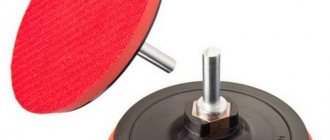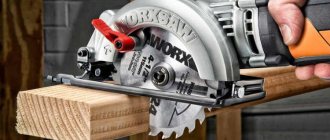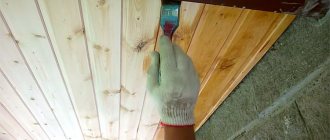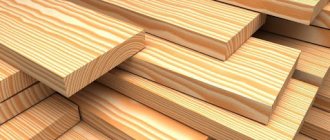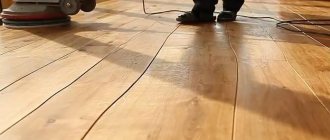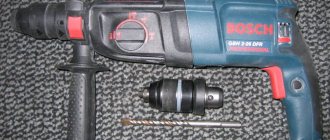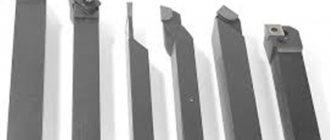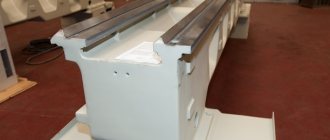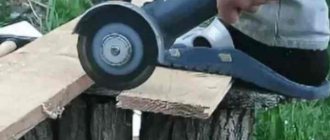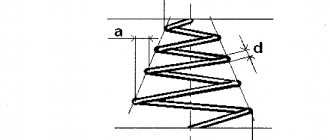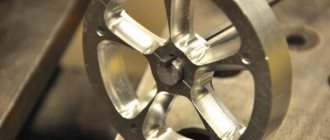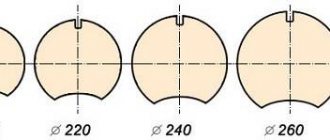Types of scaffolding
Although metal or wood is predominantly used for the manufacture of scaffolding, they may differ in the method of fastening, and accordingly have different functional elements in their design. So, let's look at the main types of forests.
Wedge
The component elements are connected by a special wedge fixation. Scaffolds of this design are highly reliable. They are able to withstand quite heavy loads. At the same time, they are easy to use and can be quickly assembled and disassembled. The use of wedge scaffolding is especially important during construction and lifting of heavy materials and components.
Frame
The main element of this design is a rigidly mounted frame. They are mainly used for painting or plastering work. The frame in this design is connected to horizontal posts and diagonal braces thanks to node connections. The main advantage of frame scaffolding is its low cost. Their construction does not require large investments.
Pin
In these scaffoldings, the connection point, as is obvious from their name, is the pin. This type of scaffolding is very popular among builders, as they are very easy to assemble and disassemble directly on the construction site. It often takes a day or even two to assemble the scaffolding. In this case, assembling the pin scaffolding will not take much time.
Clamp
If the object where repair work is being carried out has a complex configuration, then clamp scaffolding is an excellent solution. The fastening method used is professional. And for their manufacture, the height and size of the working area, the distance between tiers and the pitch of the racks play an important role. All this is selected individually for each facility.
From boards
We invite you to familiarize yourself with a simple guide to making scaffolding from boards. To do this, follow a few simple sequential steps:
- Lay out 4 racks or boards parallel to each other on a flat area. Their size must immediately correspond to the height of the scaffolding.
- The racks are connected to each other by horizontal jumpers, on which the flooring will later be laid.
- Place the 2 frames made horizontally opposite each other, tie them diagonally and horizontally with boards that will serve as ties.
- Lay the flooring from the boards on the horizontal ties and attach it to the lintels with self-tapping screws.
- Attach the railings to the posts and secure the stairs.
If it is necessary to lengthen the scaffolding structure, connect several similar sections of boards together. The boards are placed on the support posts.
When assembling wooden scaffolding, if nails are used, it is recommended to pre-drill holes to prevent the boards from splitting.
Choice of material and shape
Trellis can be created from absolutely any materials, but the following are most often used:
- metal;
- tree;
- plastic;
- wire.
Wooden bars are especially popular. When using such material, it should be taken into account that the larger the plant, the more rigid the frame should be.
The shape of the trellis is directly related to the material used. Wooden structures most often resemble a rectangle or triangle. Trellis made of metal or plastic can have more original shapes - a fan, an arc.
Design
Construction of scaffolding
All scaffolding consists of the following elements:
- racks;
- diagonal and horizontal struts (they give spatial strength to the structure);
- flooring lintels;
- a flooring made of boards on which a person will stand;
- stops (to create stability of the scaffolding and prevent it from falling away from the wall);
- a fencing element (so that a person standing on the flooring does not fall down);
- ladder (stepladder) for climbing to the desired level of scaffolding.
Application
Experts find their own use for each type of wood. Depending on the purpose, they are used:
- in cosmetics;
- production of decorative elements;
- car interior trim;
- in underwater equipment;
- building construction.
The main direction of wear-resistant wood is construction and furniture production. Possessing good mechanical properties makes it possible to use for artistic cutting.
The difficulty of mass use of material from such breeds lies in the remoteness of its supply and the legality of logging; Red Book pets are protected by law.
Iron trees are truly unique and amazing. They were able to enter into an argument with the laws of physics and nature - the dense structure of the trunks allows it to easily sink in water. Some species are priceless because they are the silent guardian of centuries-old history.
Made of wood and boards
Wooden
You can find quite a lot of advice on how to make scaffolding on the Internet. Moreover, the recommended designs differ mainly from each other only in the thickness of the board and the size of the scaffolding itself. To avoid getting confused in all this “diversity,” try to focus on the following values:
Installation of scaffolding,
the distance between the posts is 2-2.5 meters;- flooring width for work – 1 meter;
- the height of the entire structure is no more than 6 meters.
Let's get started:
- Prepare the necessary materials in advance:
- boards with a thickness of at least 50 mm and a width of 100 mm (or round timber, or timber 10x10 cm) - for racks and stops;
- boards for spacers and fencing 30 mm thick;
- boards for lintels and flooring 50 mm thick;
- nails (screws in this case are less reliable).
- Attach the four posts using diagonal spacers (on all four sides) at the recommended distances.
- Attach the lintel boards to the desired height.
- Secure the deck boards to the lintels.
- Nail a board to fence off the work area.
- Install stops.
- Position and secure the ladder.
DIY making
To make forged wood with your own hands, you need to learn the forging process. It is best to learn from someone who has been blacksmithing for a long time. If you don’t have such a friend, you can read the relevant literature and watch a training video.
Preparing and drawing up a diagram
Before you start forging, you need to draw a sketch of the future product. This will make it easier to visualize the result and select sizes.
Tools and materials
There are two forging technologies - hot and cold. For each of them you will need different tools and consumables. For cold forging you need different manual machines:
- flashlight - making lanterns, baskets;
- wave - a manual machine for creating rings and sinusoids from various metal blanks;
- twister - a device for twisting various workpieces around its axis;
- snail - a manual machine for making spiral-shaped decorative parts;
- bender - a device for bending metal workpieces at different angles.
More often, manual machines for cold forging are made independently. The device can be made from scrap materials.
Hot Forging Tools:
- Anvil. The support on which forging will be performed. Must be massive and stable.
- Horn for heating workpieces. You can assemble it yourself from fireclay bricks.
- A set of shperaks.
- Handbrake, sledgehammer.
- Shaped hammers.
- Blacksmith's pliers.
Suitable consumables include rods of different diameters, wire, sheets of metal, and metal strips. You need a grinder, a welding machine, and a metal brush.
Gnutik machine (Photo: Instagram / stanmann_ru)
Manufacturing
Cold forging process:
- Mark the blanks according to the required sizes and cut them with a grinder.
- Using manual machines, give the workpieces the desired shape.
- Connect the parts using a welding machine on the workbench.
- Clean the welding seams and coat them with an anti-corrosion compound.
Hot Forging Process:
- Heating of workpieces.
- Forging with a hammer, shaped hammers to the required shape.
- Stabilization or cooling of metal under natural conditions.
- Quenching - heating to a certain temperature
You need to let the parts cool and connect them together using a welding machine.
Decoration
In order for forged structures to last longer, you need to protect them from rust by using:
- special moisture-resistant paint for metal surfaces;
- transparent anti-corrosion coatings.
One of the best options is to apply powder paint in a special chamber.
From a profile pipe
Metal scaffolding
Now about how to make scaffolding (collapsible) from metal (dimensions of one section: height - 1.5 meters, width 1 meter, length 1.65 meters). Determine the number of sections based on the height of the scaffolding you need.
- Prepare the necessary materials:
- for racks - profile pipe (square section) 30x30 mm - length 1500 mm;
- for spacers - a pipe with a diameter of 15 mm;
- for connecting inserts (adapters) – profile pipe 25x25 mm;
- Make the flooring from boards 40-50 mm thick and 210-220 cm long.
- Cut the pipe for spacers according to the following calculation:
- for diagonal elements – 2 meters;
- for horizontal elements connecting the racks from the sides of the structure - 96 cm each.
- Cut diagonal two-meter spacers at both ends (by 6-8 cm) and flatten them (this will make it easier to attach them).
- Connect two posts together by welding them together with horizontal spacers in increments (vertical) of 30 cm.
- Assemble the adapters: put a small section of 30x30 cm profile pipe (7-8 cm long) onto a profile pipe with a cross-section of 25X25 mm and a length of 25-30 cm and weld in the center.
- Drill holes for bolts on the posts and diagonal braces.
- Assemble the entire structure, sand and paint.
- Place one section on top of another (connecting them using adapters), lay the flooring from the boards in the right place.
Varieties
Forging trees from metal is an interesting technological process that is practiced by many modern blacksmiths. Among the works of famous masters we can highlight:
- Wall decorations. These can be individual branches or spreading crowns. They are fixed to the walls using bolts or special hooks.
- Hangers. Twigs and leaves act as hooks for clothes.
- Railing. A combination of decorative elements with railings for stairs inside or outside the house. The branches fill the free spaces between the load-bearing structural elements.
- Fences. Forged branches are fixed between concrete or metal pillars. This is an expensive option for fencing design. Such fences have a drawback - transparency. Strangers will see what is happening on the site.
- Flower stands. Forged trees that are mounted on the wall can be made with hangers for flower pots.
- Window bars made of intertwined branches.
- Tables. Forged wood serves as a stand for the tabletop.
To improve the appearance, branches are often decorated with homemade birds, berries, geometric shapes, numbers, and letters.
"Pros and cons"
What homemade scaffolding should be like
Firstly, scaffolding is not a small scaffolding, but a rather bulky structure that will need to be stored somewhere after the need for it disappears.
Wooden scaffolding, of course, can be disassembled later, but the work is labor-intensive, and the boards, if you don’t need them in the near future, also need to be stored somewhere. Do not forget that wooden scaffolding is assembled using nails, not screws, so the boards will no longer be completely intact. In addition, when working on scaffolding, the wood often gets dirty with mortar or paint.
Self-made metal scaffolding can not only be disassembled, but also rented out in the future.
Secondly, non-prefabricated scaffolding is designed to work maximum at the second floor level (from the ground). At higher altitudes, the operation of self-made scaffolding becomes dangerous.
Thirdly, scaffolding is required quite rarely (only for repairing the facade of a building), so the assembly and disassembly of such a temporary structure is not profitable in terms of the time spent on this work.
Fourthly, scaffolding often has to be made long (for example, at least 6 meters for installing siding). Accordingly, their weight increases, and moving homemade wooden scaffolding to the other side of the house becomes a problem even for three or four people.
What is ironwood
People, by their natural curiosity, are interested in what this phenomenon is. Moreover, for what features is it called iron wood? Why is mature wood used and why are the properties of the species so expensive?
Each country owns an “indigenous” plant whose structure looks like iron sheet and has the properties of metal. Such plants tend to be long-lived because wood fibers grow slowly. Material from strong trees is used in construction and transport.
The perennial plant is no different from its fellows with the naked eye. They develop slowly and easily overcome the two-hundred-year mark. There are specimens with a 500-year standing period. On sections of trunks it is difficult to see the growth rings indicating age; they are almost invisible.
How to do without scaffolding
It is worth thinking about forests at the stage of designing a house.
If you don’t plan to carry out the façade work yourself (but are planning to hire a construction team), then you don’t have to think too much about scaffolding, since builders usually come to the site with their own scaffolding and scaffolding.
However, after construction is completed (and after some time has passed), scaffolding may be needed for minor facade repair work. Can this be avoided?
Certainly. And first, make sure that the facade of your house does not require repairs for many years. To do this, it is enough to use facing bricks when constructing walls. Now it is produced by many manufacturers and in a fairly wide range of colors.
But other facing materials (such as siding, plaster and others) will periodically require your attention and, accordingly, additional costs, since you will not be able to make scaffolding (buy or rent) for free.
Types of iron trees
Plants with metallic properties are scattered across all continents of planet Earth. The very definition - iron trees, includes a whole series of plants with this quality. In every corner, species are found with their own name, given by the local population. Our country also owns such a hero.
Birch Schmidt
Primorye of Russia has this long-lived plant. The name of the tree was given in honor of the scientist F.B. Schmidt. The robust plant is full of body armor qualities. Its wood is so durable.
It reaches a height of 25 m, with a trunk diameter of 80 cm. The giant has an oval shape in outline, with a grayish-cream tint to the bark. The foliage is short-petioled and bright green.
The iron miracle usually grows in the Asian part of the globe, where it is in great demand. In China, Korea and Japan, the plant is used as a choleretic substance, treating chronic and acute forms of eczema, lichen and wounds.
Prickly argan
Common vegetation of the African region. Mostly located in southwestern Moroccan territory and Algeria. According to recent estimates, the number of perennials exceeds 2 million. The life of local Berbers completely depends on the mighty tree.
Argan branches are used in the installation of hut frames, which acquire an iron, stable character, and also as fuel for heating. The foliage is suitable for feeding livestock. Many inhabitants of the black continent use the plant as food.
The giant's crown is located at a ten-meter height and reaches a fifteen-meter width around its circumference. To search for moisture, the roots of the plant go deep into the ground up to 30 m. To protect itself from animals that feed on leaves, the tree was endowed by nature with sharp thorns on its branches.
Parrotia persica (Temir-agach)
Standing out from the line of strong varieties of iron trees, parrotia, surpasses steel in the hardness of its wood. When the tree blooms in the spring, Iran and Africa are immersed in the delights of the plant. But Azerbaijan can also boast of the luxury and grandeur of such a miracle.
A tree growing in suitable conditions belongs to the heat-loving group. True, the iron character is able to withstand 25-degree frosts. In height, mature species can reach a 10-story building. The life cycle of a powerful plant often exceeds a period of 200 years. Parrotia forests are a UNESCO World Heritage Site.
As a decorative element, it is used as a hedge, making the approach to buildings completely impassable. In ancient times, parrotia wood was used as a bladed weapon in wartime; now it is often used for the manufacture of floors and windows.
Other varieties
There are other breeds of giants that grow in different latitudes of our planet.
- yew;
- Christmas;
- hop hornbeam;
- mezuya;
- brazilwood;
- siderocylon;
- casuarina;
- south frame;
- boxwood;
- welding;
- iron ixora;
- guaiacum.
Nature abounds in plant names, and linguists can only marvel at their quirkiness.
Birch Schmidt
This is the hardest tree growing in a protected forest called “Kedrovaya Pad” (Primorsky Territory). The strength exceeds the same parameter of cast iron by 1.5 times. You can even shoot this birch tree with a pistol - the bullet will simply fly off and not damage its trunk. The wood of this tree successfully replaces metal. The rare tree lives for about four hundred years, which is a very impressive life span, because not a single birch tree is distinguished by such longevity.
White acacia
This tree has wood that in our country is considered one of the hardest. Attractive texture, rich color, excellent strength, highest hardness, remarkable resistance to rotting - these are the distinctive features of this wood. In addition, it is very easy to polish. Acacia wood is used for the production of furniture and parquet.
Ulin
This Bornean “iron” wood is extremely difficult to process due to the high hardness of the wood. Its smooth texture and pleasant color make ulin especially attractive in the production of parquet, solid boards and furniture. You can cut this tree, but you often have to sharpen your tools. But a product made from ulin will last quite a long time.
Characteristics of wood
Iron trees are distinguished by a unique trunk structure and a number of other parameters given below:
- The bark contains tannins that help resist the appearance of fungal diseases and various parasites.
- The fibers of the barrel are resistant to acids and are resistant to corrosion.
- The age process reaches the 200-year mark and is capable of further growth.
- The density of wood is large and equal to 1 t/m³, with a humidity of 12%. Therefore, the development of aging is slowed down.
- The girth of the aksakal trunk can exceed 200 cm.
Possessing such qualities, vegetation is capable of surviving in different climatic conditions. Drought and abundant humidity do not harm powerful abilities and cannot break an iron character.
